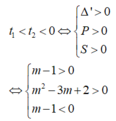1. Cho pt: x2 -2(m+1)x+m2=0 (1). Tìm m để pt có 2 nghiệm x1 ; x2 thỏa mãn (x1-m)2 + x2=m+2.
2. Giai pt: \(\left(x-1\right)\sqrt{2\left(x^2+4\right)}=x^2-x-2\)
3. Giai hệ pt: \(\left\{{}\begin{matrix}\frac{1}{\sqrt[]{x}}-\frac{\sqrt{x}}{y}=x^2+xy-2y^2\left(1\right)\\\left(\sqrt{x+3}-\sqrt{y}\right)\left(1+\sqrt{x^2+3x}\right)=3\left(2\right)\end{matrix}\right.\)
4. Giai pt trên tập số nguyên \(x^{2015}=\sqrt{y\left(y+1\right)\left(y+2\right)\left(y+3\right)}+1\)





















